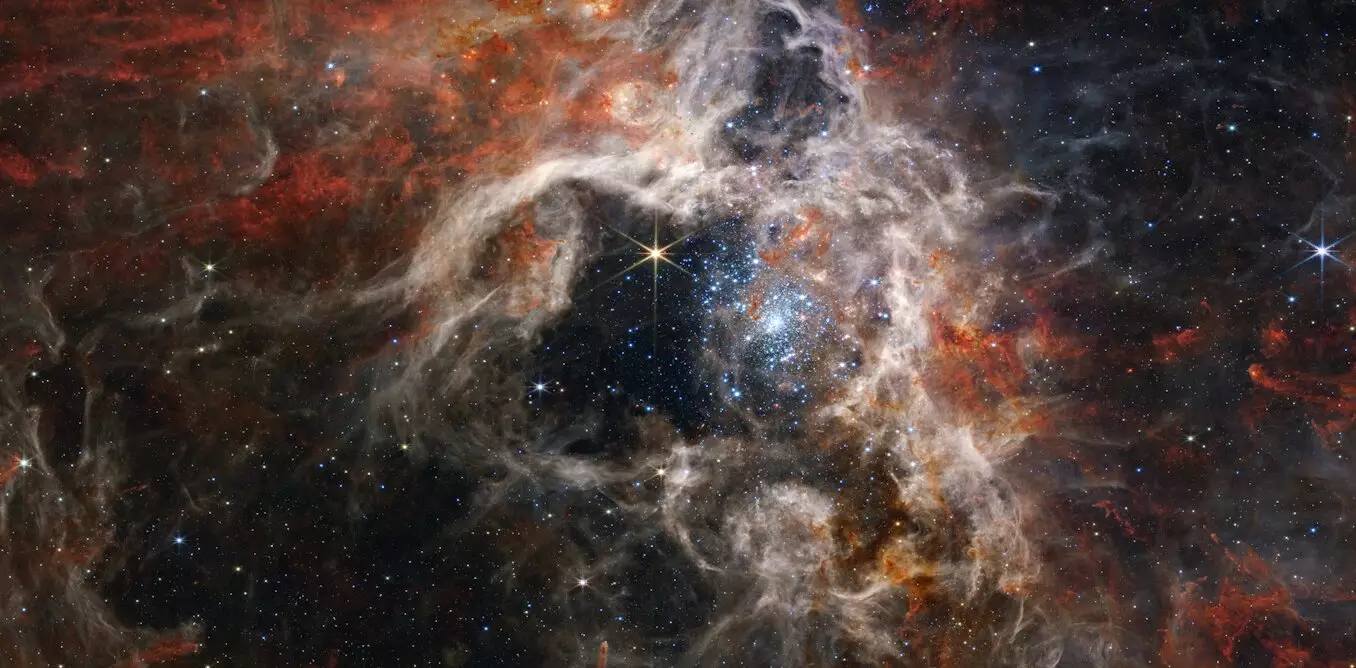The cosmos, stretching across 13.7 billion years, often presents itself as a bastion of stability. Yet, beneath this serene façade lies an unsettling reality: our universe is precariously perched on the brink of potential catastrophe. The crux of this vulnerability stems from the Higgs boson, a fundamental particle that, despite its humble-sounding name, plays a critical role in determining the mass and interactions of all matter. Recent research posits that anomalies in our understanding of primordial black holes could have dire implications for the stability of the Higgs field, potentially leading to a seismic shift in our grasp of the universe’s laws governing existence.
The Higgs Field: Understanding the Underlying Fabric of Reality
To appreciate the gravity of this issue, one must first understand the Higgs field, an omnipresent entity that fundamentally influences how particles acquire mass. Picture it as a vast, still lake that fills the cosmos—a medium through which all particles move, interact, and resonate. The uniformity of this field is what allows us to study and predict particle behavior reliably; regardless of where we are in the universe, the rules of physics remain consistent. However, the stability of the Higgs field is under continual scrutiny, as it may not occupy the lowest possible energy state. If it were to transition to a lower-energy phase—akin to boiling water transitioning to vapor—the consequences would be nothing short of cataclysmic, altering fundamental interactions and the nature of matter itself.
The Fragility of the Higgs: Bubbles of Catastrophe
The concept of a phase transition in the Higgs field, wherein it forms low-energy “bubbles” of space, suggests a potential for catastrophic outcomes. In these bubbles, the inherent properties of mass and the relationships between particles could change drastically, rendering the very fabric of existence unrecognizable. The implications of such a shift may assert that significant portions of the universe could experience profound instability, where the basic building blocks of matter, such as protons and neutrons, lose their essential coherence. Yet, while this scenario appears terrifying, the scientific discourse converges on a critical point: the occurrence of such an event is theorized to be incredibly rare, primarily governed by quantum fluctuations that might take trillions of years.
The Power of External Influences: Primordial Black Holes
Enter primordial black holes—hypothetical relics born from extreme density in the nascent universe. These compact entities could possess masses remarkably lighter than conventional black holes, possibly masquerading as tiny cosmic perturbations. The existence of such primordial black holes is an intriguing concept intertwined with iconic models of the early universe, particularly those describing cosmic inflation. However, their looming presence raises questions about the stability of the Higgs field. Should these figures exist, their influence on the Higgs could create hot spots in the cosmos, contributing to the formation of the aforementioned phase transition bubbles.
Hawking Radiation: A Heat Source for the Universe
An essential player in this cosmic drama is Stephen Hawking’s theory on black hole radiation, detailing how black holes emit energy through their event horizons. This radiation suggests that smaller black holes possess higher temperatures and—more critically—emit energy at rates that could facilitate fluctuations in the Higgs field. The interaction between primordial black holes and the Higgs field thus becomes a focal point of concern: if these light black holes ever sprinkled the universe, they might have introduced enough energy to destabilize the Higgs field previously, leading to catastrophic bubbling events.
Debunking the Myth: Do Primordial Black Holes Actually Exist?
Recent studies indicate that the potential for primordial black holes to influence the stability of the Higgs field may be less than previously thought. By analyzing the interplay of various heat contributions within the universe, scientists suggest that these tiny black holes, while theoretically appealing, are unlikely to have played a significant role in cosmic events as we know them. If these entities do not exist within the predicted mass range, the fears of widespread bubbling in the Higgs field might be overstated, indicating that all cosmological scenarios predicting primordial black holes could essentially fall flat, sending us back to the drawing board in our understanding of the universe’s early epochs.
Implications and the Path Ahead
The implications of this research stretch far beyond mere existential dread. If indeed our theories surrounding primordial black holes are correct, then we are left contemplating the prospects of undiscovered realms of physics. Perhaps hidden particles or forces are at play, providing a form of protection for the Higgs field against catastrophic changes. Such revelations could unlock new domains of understanding that enhance our knowledge of both the universe and its fundamental workings. The path ahead is fraught with questions, and while we can breathe a temporary sigh of relief regarding our cosmic fate, the quest for understanding remains as urgent as ever.

